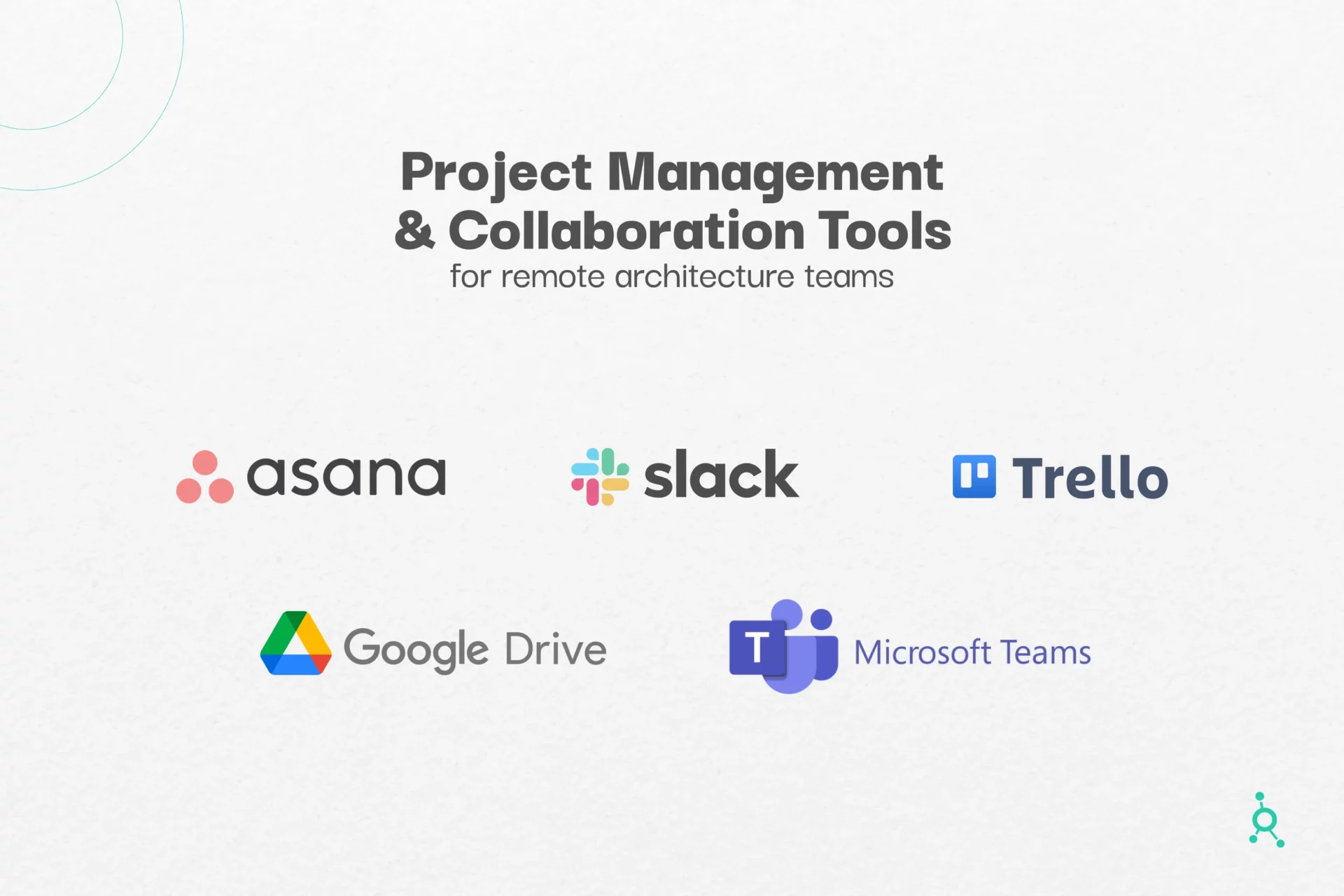Tools And Resources that Help Architects Hire And Manage Remote Staff
SHARE POST
In today’s interconnected world, the architecture industry has witnessed a remarkable shift in how professionals collaborate and operate. Remote work has become a norm, providing architects with the opportunity to hire and manage talent from across the globe. However, with this newfound flexibility comes the need for robust tools and resources that streamline the process of hiring and managing remote staff. In this blog post, we will explore a comprehensive set of tools and resources tailored to meet the specific requirements of architects, ensuring a seamless remote work experience for both remote staff and architects.
Embracing Remote Staff in Architecture
To successfully navigate the shift to remote work, architects must first understand the benefits and challenges it entails. This section will highlight the advantages of remote work, such as access to a global talent pool, increased flexibility, and reduced overhead costs. It will also address the potential challenges, such as communication barriers, project management complexities, and maintaining team cohesion. By acknowledging these factors, architects can make informed decisions and proactively adopt the right tools and resources.
Harnessing the Global Talent Pool
One of the significant advantages of embracing remote work in architecture is the ability to tap into a global talent pool. With remote work, architectural firms are no longer limited to hiring professionals within a specific geographic location. Instead, they can collaborate with architects, designers, and specialists from different parts of the world, bringing diverse perspectives and expertise to the table. This access to a wider talent pool can lead to increased creativity, innovation, and fresh ideas for projects.
To make the most of this opportunity, architects can utilize online platforms, professional networks, and freelancing websites to connect with talented professionals from various backgrounds. Engaging with international experts can not only enrich the quality of architectural projects but also foster a culturally diverse and inclusive work environment.
Flexible Work-Life Balance
Remote work allows architects to achieve a better work-life balance, which can result in increased job satisfaction and overall well-being. By eliminating the need for daily commutes and offering flexible working hours, architects have the freedom to structure their day according to their individual productivity patterns and personal commitments. This flexibility can lead to higher levels of motivation and creativity, as professionals can work in environments where they feel most comfortable and inspired.
Moreover, architects can take advantage of the flexibility to accommodate their clients’ time zones and schedules effectively. This adaptability can facilitate smoother communication and collaboration with clients from different parts of the world.
Lower Overhead Costs and Sustainable Practices
Embracing remote work can significantly reduce overhead costs for architectural firms. By allowing team members to work from home or other remote locations, firms can downsize physical office spaces, thereby saving on rent, utilities, and office maintenance expenses. These cost savings can be reinvested in employee training, technology upgrades, or marketing efforts, contributing to the firm’s growth and competitiveness.
Additionally, remote work aligns with sustainable practices, as it reduces the carbon footprint associated with daily commutes and office-related energy consumption. By adopting remote work, architectural firms can position themselves as environmentally responsible organizations, which can enhance their reputation and attract clients who prioritize sustainable design solutions.
Project Management and Collaboration Tools
Effective project management is vital in architecture, and remote work requires adaptations to ensure successful outcomes. Cloud-based project management tools can become invaluable assets in this regard. These tools enable real-time project tracking, task assignments, file sharing, and version control, streamlining the workflow and enhancing accountability within the team.
Architectural firms may also consider implementing agile project management methodologies, which prioritize adaptability, collaboration, and incremental progress. Agile approaches can help teams respond quickly to changing client needs and market demands, leading to more successful and client-centric outcomes.
Effective communication lies at the core of any remote team’s success. From video conferencing platforms that facilitate virtual meetings to project management software that ensures seamless workflow, these tools enhance collaboration and foster real-time communication among team members. Emphasizing security and data privacy will also be essential, considering the sensitive nature of architectural projects.
Here’s a short list of top-notch software destined for Project Management and seamless Communication in remote teams:

Asana
If you’re looking for a visual list of every task you have, who’s working on it, and its stage, then you need Asana! As one of the top productivity planners, Asana allows you to create teams, projects, and tasks within the set teams and projects. Users in Asana can assign and pass tasks to each other. By doing so, they’ll respect the flow of the work.
Trello
Trello is considered one of the best free digital planners out there. With Trello, you can create digital Kanban boards with several tasks displayed as cards. You can organize the tasks according to your priorities in several columns. Each task can be attributed to a person or group of people, who then can comment on it and move the card from column to column if needed.
Slack
Used by many companies around the world, Slack allows communication within teams of any size. The tool allows you to create different channels according to the number and type of participants and group conversations. It also has some fun features, like creating personalized stickers you can send to your teammates.
Google Drive
This is one of the best tools for managing remote employees, and it’s one of the most popular file-sharing tools in the world! With Google Drive, you can store all your files in a secure and intuitive platform. These documents can then be accessed by anyone on your team, regardless of their location. As it is a cloud-based app, you can easily share files by adding people as collaborators or by providing links.
Microsoft Teams
An all-around complete tool that allows you to communicate with your team via messages or video call and manages documents, tasks, and much more. It belongs to the Microsoft 365 universe, so it can be easily connected to Outlook, One Drive, and Microsoft Calendar. Inside Microsoft Teams, you can schedule calls, create personalized conversations and even share documents.
Tools aside, we know that managing remote staff can be challenging, so we’ve compiled a list of tips for managing your remote team!
Effective Communication Practices
Effective and regular communication is the key to successful remote working teams and successful managers. Communicate often, with clarity and effectively, to your entire team with clear expectations. At times, it is OK to over-communicate. But don’t overdo it.

Tracking Productivity
It is an effective measure of checking if your remote staff is functioning optimally. At the end of the day, you need to obtain a certain level of throughput from your remote workers.
To achieve this, implementing HRIS software can provide real-time insights into employees’ productivity and streamline remote workforce management. This software ensures maximum efficiency and accountability in remote teams by tracking key performance indicators and monitoring work progress.
Set expectations from The Start
The employee onboarding process is important; within that process, it is important to provide guidelines and set expectations and boundaries. A manager or teammate should be there to answer questions that may arise and help the new employee in their role.
Have workplace flexibility
If you have remote workers, you will want them to have flexible hours. If they are working on a project that does not require customer interaction, then there should not be an issue if they prefer to work late at night or early in the morning.
Keep in mind that there should be consistency as well. If, for example, everyone is working as per their hours, most of them may not be available for team meetings or group discussions. This will help with work-life balance.
Celebrate milestones and successes
Create video recognition videos, celebrate birthdays, and work milestones normally done in an office environment.
Going remote is easier than ever!
These are the best tools to manage remote teams and staff. With this stack, you’ll have everything you need to be succeeded. Managing a remote team can be challenging. However, using the right tools can become as easy as having your team members by your side every day! Leveraging communication, project management, and design software tailored to the architecture industry empowers teams to overcome geographical boundaries, work cohesively, and deliver exceptional client results worldwide.
Choose the ones that fit your company culture and embrace remote life with the right tools to help you in your everyday work.
BetterPros is a trustworthy partner, connecting firms with pre-vetted professionals with the right skills, language proficiency, and cultural understanding. Embrace the future of remote work with BetterPros and unlock unparalleled success in architectural projects and overall business growth.
Subscribe to our blog
Highly curated content, write-ups, case studies, Bps updates, and more.
Related posts

The Future of Architecture: Exploring AI’s Transformative Impact
The Future of Architecture: Exploring AI’s Transformative Impact This article delves into the profound impact AI will have on architectural design, exploring its potential to revolutionize every stage of the process, from conceptualization to construction, and pave the way for a future of sustainable, smart, and innovative buildings. AI as the next evolution in Architectural…

Basic Cybersecurity to Protect Your Work: BetterSession #17
Understanding the basics of cybersecurity and how to protect our work and that of our clients is crucial for daily routines.

How to Create a Culture of Collaboration for Remote Architects
Are you part of the architecture industry, or a professional seeking to navigate the vast world of remote work? Whether you’re an architect looking to explore remote opportunities or a firm striving to manage the complexities of a distributed but still productive team, this extensive guide was perfectly designed to meet your needs.
